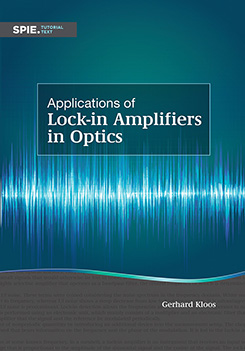|
Lock-in amplifiers are electronic devices that are often applied in the optical sciences. They represent versatile instruments that can be adapted to a variety of measurement tasks. The purpose of a lock-in amplifier is to recover small or weak signals that would otherwise be lost in noise. This device serves to detect the amplitude of a signal s that is superimposed by noise (Fig. 1.1). The instrument can be considered as a highly selective amplifier that operates as a bandpass filter, the central frequency of which is determined by the reference signal (Fig. 1.2). A measurement can be affected by white noise and 1∕f noise. These terms were coined considering the noise spectrum in the frequency domain. White noise refers to the noise contribution that is constant with respect to frequency, whereas 1∕f noise shows a steep decrease from low to high frequencies. It is advantageous to have a signal with a frequency outside of the range where 1∕f noise is predominant. Lock-in detection allows the frequencies at which the amplifier operates to move away from regions dominated by 1∕f noise. Noise rejection is performed using an electronic unit that mainly consists of a multiplier and an electronic filter, which acts as an integrator. It is essential to the operation of a lock-in amplifier that the signal and the reference be modulated periodically. |
|
|


